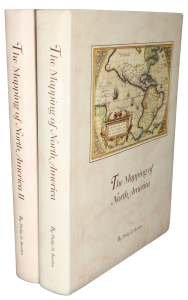Rare Maps and Prints
- World & Celestial
- North America
- West Indies, South & Central America
- British Isles
- British Isles
- English counties
- Large-scale
- Bedfordshire
- Berkshire
- Buckinghamshire
- Cambridgeshire
- Cheshire
- Cornwall
- Cumberland
- Derbyshire
- Devon
- Dorset
- Durham
- Essex
- Gloucestershire
- Hampshire
- Herefordshire
- Hertfordshire
- Huntingdonshire
- Islands
- Kent
- Lancashire
- Leicestershire
- Lincolnshire
- Middlesex
- Norfolk
- Northamptonshire
- Northumberland
- Nottinghamshire
- Oxfordshire
- Rutland
- Shropshire
- Somerset
- Staffordshire
- Suffolk
- Surrey
- Sussex
- Warwickshire
- Westmoreland
- Wiltshire
- Worcestershire
- Yorkshire
- Wales
- Scotland
- Ireland
- Western Europe
- Eastern Europe
- Middle East
- Africa
- Asia
- Australasia & Pacific
- Decorative Prints
- Title Pages
Mr. Philip D. Burden
P.O. Box 863,
Chalfont St. Giles, Bucks HP6 9HD,
UNITED KINGDOM
Tel: +44 (0) 1494 76 33 13
Email: enquiries@caburden.com
THE FIRST PRINTED MAP OF ANY PART OF THE AMERICAS. The map covers the West Indies, the northern coast of South America and present day Florida. There are seven known earlier printed maps to illustrate the New World, all of them world maps. This however, is the first devoted to it. ‘It is remarkably accurate considering its early date. At the top of the map appears isla de beimeni, this was the native Indian name given to Florida. In April 1513 Juan Ponce de Leon, the Governor of Hispaniola, set sail to claim it for Spain, and named it Florida. Below this is a string of islands leading to Cuba, these probably represent the Florida Keys. Jamaica, Hispaniola, Puerto Rico and the Bahamas are all depicted, as are Trinidad and isla verde. There is no western shore of Central America delineated because it was not until 1513 that the first European, Vasco Nuñez de Balboa, beheld the waters of the Pacific. The depiction of the island of Bermuda records for the first time the discovery of it by Juan Bermudez in 1505, and el estrecho represents the Strait of Gibraltar separating Spain from the African continent’ (Burden).Peter Martyr was born in Italy in 1455 and arrived in Spain in 1487. Entering the Court of King Ferdinand and Queen Isabella he became tutor to their children. He became a member of the Council of the Indies and learnt much about the discoveries of ‘Columbus, de Gama, Magellan, Cabot Vespucci and other explorers’ (Burden). The map was published in Peter Martyr d’Anghiera’s ‘Legatio Babylonica’ in 1511. There are two known issues in the same year, it only appears in one. The work is written in Latin by groups of ten letters or ‘Decas’. It is the earliest published history of the New World. ‘In 1511 the King issued a decree forbidding the map from falling into foreign hands. There is some debate, however, as to whether this pre-dated the publication of Martyr’s map or not’ (Burden). It is extremely scarce, at the time of publication I knew of only ten examples. Since 1996, six more have been identified. A full list of locations is found in my second volume. Burden (1996) no. 1; Burden (2007) p. vii; Church (1907) no. 35; Harrisse (1866) no. 66; Harrisse (1892) p. 474; Nebenzahl (1990) p. 60; Schumacher (A Monograph on P. Martyr); Skelton (1960) p. 59; Suárez (1992) p. 58; Vindel (1955); Winsor (1884). p. 12.
MARTYR D’ANGHIERA, Peter
(No title)
Seville, 1511
190 x 280 mm., woodcut, light offsetting as usual, trimmed to the right side slightly as often found, otherwise in good condition.
Stock number: 8473
SOLD






